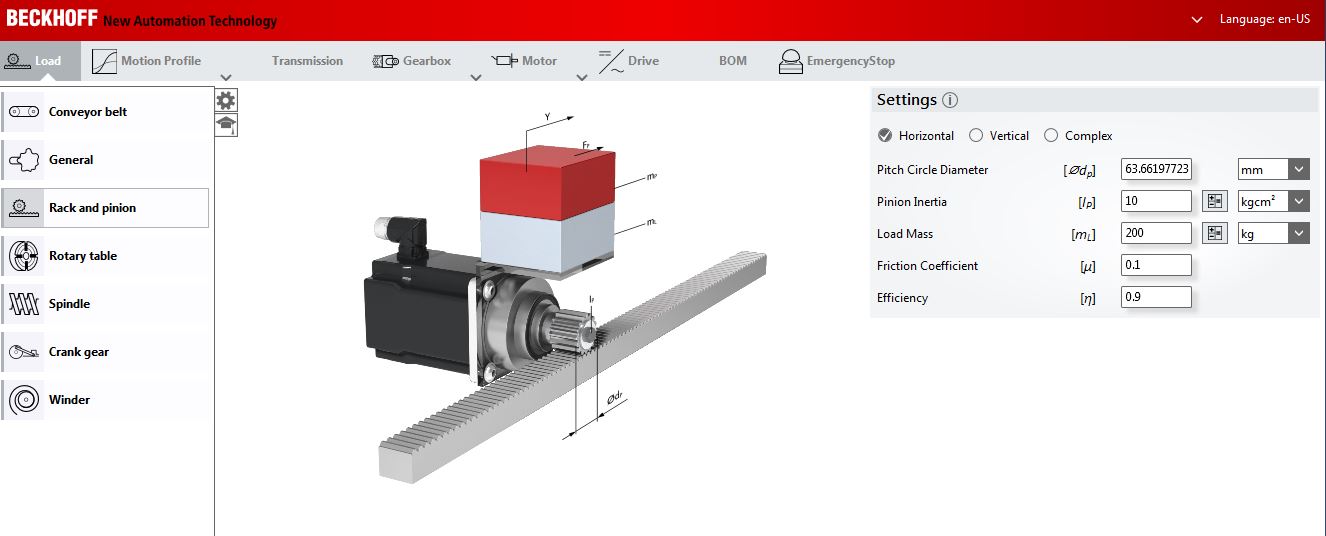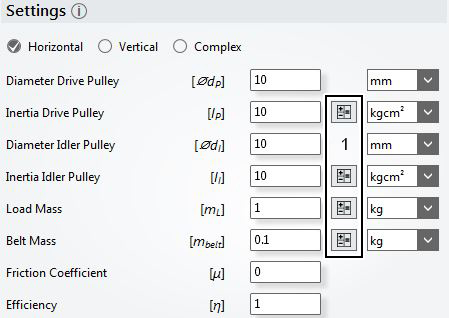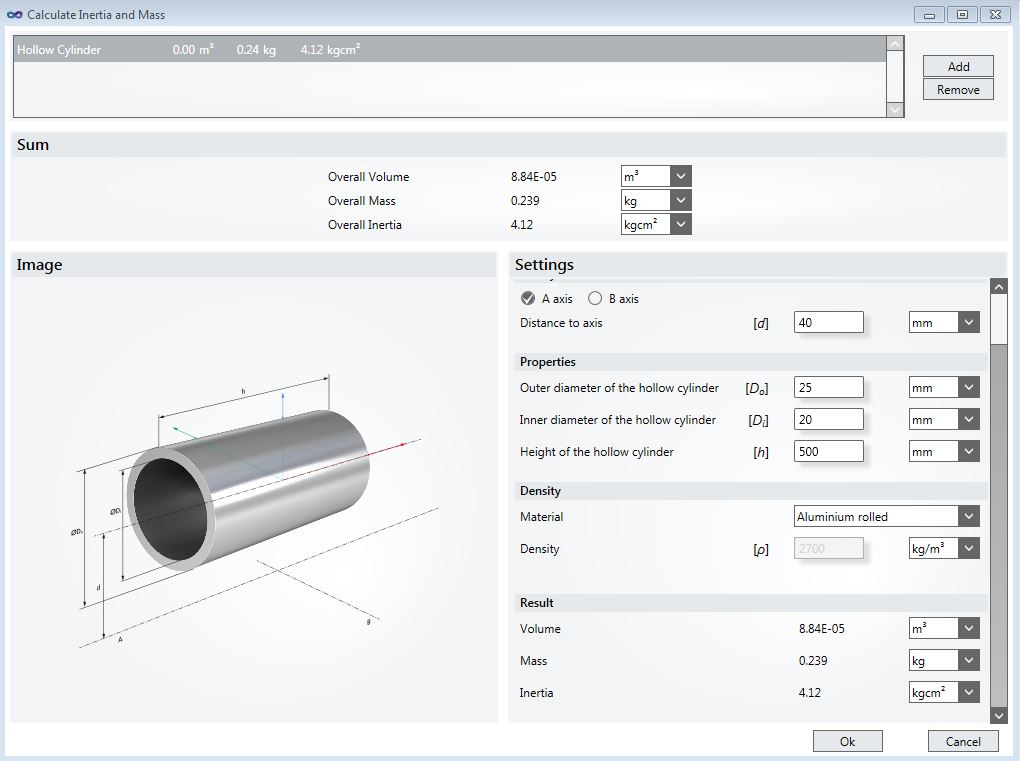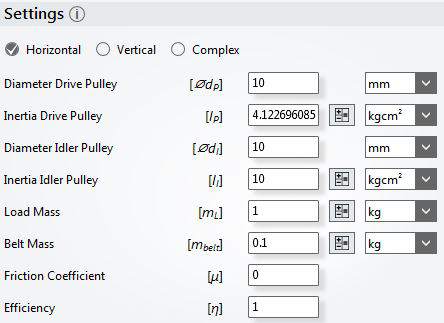Configuration example
In this section we calculate a mass inertia for a drive roller (hollow cylinder) rolled from aluminum for the load case Conveyor belt as an example.
Step 1
Creating the load case | |
| In the first step create the load case Conveyor belt. Microsoft Visual Studio and TC3 Motion Designer must be open. Furthermore, a DC link must have been created, and an axis must have been added. Activate TC3 Motion Designer by double-clicking on the created axis. Further information can be found in section: "Activating TC3 Motion Designer". |
Step 2
Activating the inertia calculator | |
| In the next step, activate the inertia calculator according to the button shown at (1). Detailed information can be found in section: "The inertia calculator". |
| After pressing the button, the input window for the inertia calculator appears (see image on the left). The default body is a cylinder (solid material). Step 3 explains how to change the body. |
Step 3
Specifying the drive roller | |
| You can now specify your drive roller. To select the basic body (in this case a hollow cylinder), open the pull-down menu in the tab Settings → Body. A list with various geometries opens, from which you can select the basic body that matches your application. Now you can create an axis of rotation, i.e. the axis around which your geometry rotates. You can distinguish between A- and B-axis. Now enter the axis distance based on the center of the body and the selected axis of rotation. In our example we select a distance of [d] = 40 mm. Next, enter the other properties of the geometry. These include the outer [D0] and inner [Di] diameter and the height [h] of the hollow cylinder.
In last specification step you have to select the material. The specific density [p] is automatically added once the material has been selected. We select rolled aluminum with a density of 2700 kg/m³ as material. |
Results view | |
| Once all the required data have been entered successfully, the result is displayed in the lower window of the inertia calculator (see image on the left). Our hollow cylinder has a volume of 7.85E-07 m³, a mass of 7.85E-07 kg and a mass inertia of 9.82E-08 kgcm². |
 | Selecting the units! All units used in the inertia calculator can be changed via pull-down menus (to the right of the input fields). When a unit is changed, the result is shown in the result and sum view. |
Step 4
Data transfer to the settings area | |
| Once all the data required for your hollow cylinder have been entered and the inertia calculator has provided the results, confirm your configuration with OK. After the confirmation your data are automatically transferred to the settings area of your load case (see image on the left). You have successfully transferred your data into the settings window for the Conveyor belt load case. Now you can enter further inertia data.
|





